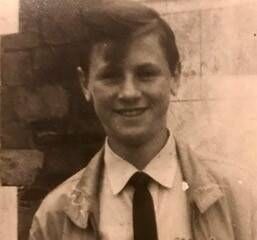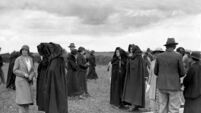Stone me! How my mother and Séamus Murphy conspired to dash my hopes of being a sculptor

NORTHSIDE LEGEND: Cork sculptor Seamus Murphy in profile beside Shandon Bells in 1973, two years before he died
IT was May, 1963, and the Inter Cert was looming. I had had enough. I just wanted to be out, not just out of North Mon, but out of rooms and buildings.


Pleasantries over.
“Well, Mr Murphy?” my mother said. What came next was like a bucket of cold water over me.
“Keep him at the books, Mrs McCarthy.” And with those few words, Mr Murphy dashed all my hopes of freedom.
I did indeed stay at the books, and in the wider sense I am still at the books. As I got older, I changed my mind about Mr Murphy. I left behind my resentment and saw the clear-sighted man who had helped push me firmly in the right direction. If you asked me, I would even say I was grateful to Mr Murphy.
“Is this the boy?” The first thing other than my mother’s name that I had heard Mr Murphy say.
And then, in an instant, I knew the truth. It had had nothing to do with Mr Murphy at all. And I had almost as little to do with it as the stonecutter. There must have been an earlier conversation.
I knew it for a certainty that my mother had been to see Mr Murphy the day before and had asked him to help.
No matter what he thought of Stephen after an hour’s chat, there was only ever going to be one outcome. “Keep him at the books,” said my mother!
Born in Burnfort, near Mallow, Séamus Murphy is one of Ireland’s finest ever stone carvers/sculptors.
He grew up in Ballyhooley Road and Daniel Corkery was among his teachers.
Séamus was an apprentice for John Aloysius O’Connell in Blackpool and opened a studio next door.
His best known works are Church of the Ascension, Blackpool, The Onion Seller in Bishop Lucey Park, and busts of Terence McSwiney and Tomás MacCurtain at City Hall.







